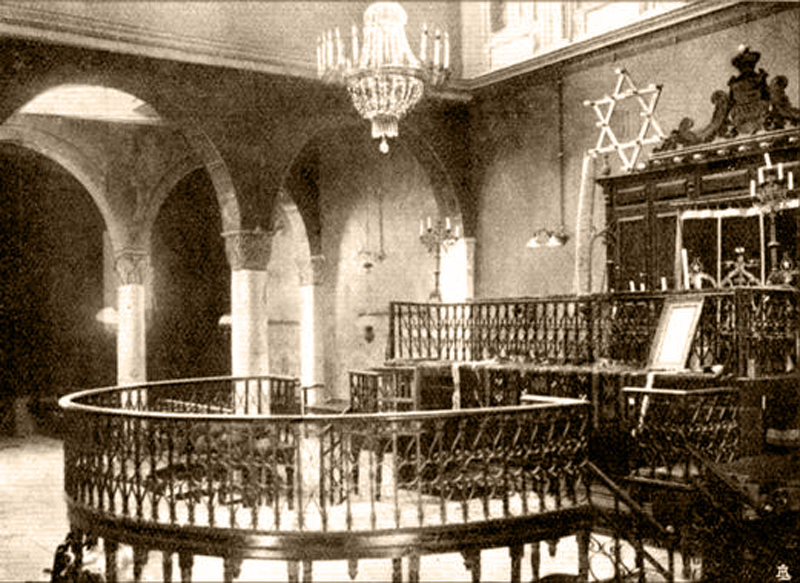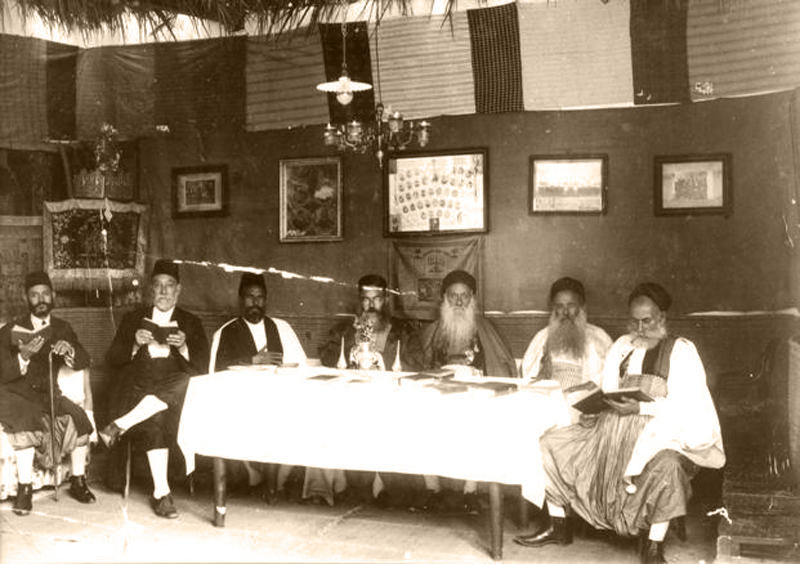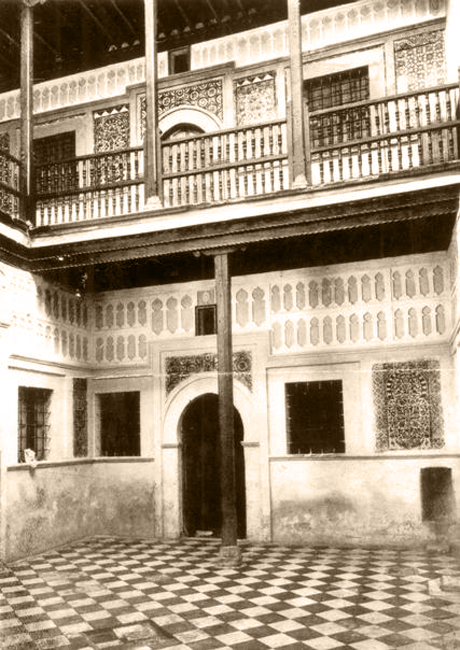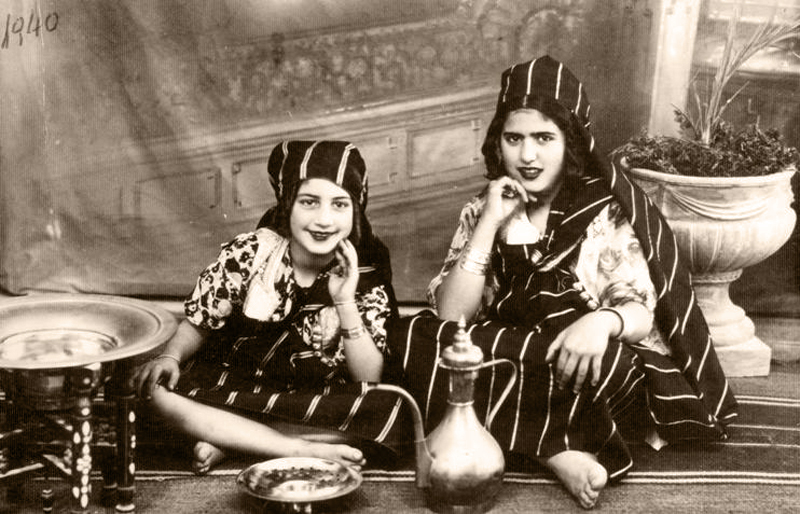Not a single Jew remains in Libya today.
Though Libya had been home to a Jewish community for thousands of years, and though the Jews had lived under Greek, Roman, Ottoman, Italian, British, and Arab rule, no trace of this once-thriving community exists anymore.
The modern history of Libya can be dated from 1911, when Libya became an Italian colony. Indeed, the fact that Libya was an Italian colony and did not fall under the Vichy regime in France made the fate of the Jews of Libya different from that of the Jews of Algeria, Morocco and Tunisia.
In the early twentieth century, much of the population of Libya was Islamic and tribal, and was against European colonialism. However, under the Italians, the Jews were treated relatively well. In 1911, there were about 21,000 Jews in the country (4% of the total population of 550,000), the majority of whom lived in Tripoli. A smaller number lived in Benghazi, as well. In these cities, they lived among the Arabs and the Europeans. Jews also lived in cities, farms, and villages; even in caves. By the eve of World War II, 30,387 Jews lived in Libya.1
The beginning of the end for the Jews of Libya was the institution of harsh, discriminatory legislation by Italy against its own Jews in 1938. This legislation, known as the Fascist “Race Protection Laws”, was instituted in Libya as well, although it was not enforced in practice until the death of Italo Balbo, the Fascist governor of Libya, in 1940.
These laws dealt a blow to the Jewish community of Libya. Jews could no longer send their children to public or private Italian schools. Intermarriages between “Aryans” and “non-Aryans” became illegal. Jews were barred from any state employment as well as from the skilled professions. Jewish passports were required to be stamped “Jewish race.” Despite these setbacks in the late 1930’s, Tripoli’s population remained 25% Jewish in 1941, with 44 synagogues servicing the needs of the Jewish population there.
The war reached Libya in the autumn of 1940, when Italy attacked British-influenced Egypt from bases in Libya. This campaign was a disastrous defeat for Italy, and the British entered Libya. The Germans deployed their troops in Libya in 1941 and drove the British out of Libya, but the front changed hands five times between December, 1940 and January, 1943, as described by Benjamin Doron in his interview in this newsletter. The Cyrenaica region of Libya, and especially Benghazi, felt the impact of the constant fighting: twice the British army conquered Libya, and twice they were driven back by Italian and German troops. In the city of Tripoli, the Jewish quarter was often used for Italian anti-aircraft positions. As such, it was subject to massive bombing by the British and the French; in one attack, 4 synagogues were destroyed and 30 Jews killed. In other attacks, the Jewish cemetery, also used by the Italian army to position their anti-aircraft guns, was damaged; graves were stripped of their tombstones to build fortifications.2
Each time the British army entered Libya, the Jews showed enthusiastic support for them, since during their conquests, the discriminatory race laws were not applied. But each time Libya was recaptured by the Italians, the Jews were punished severely for their so-called “collaboration” with the enemy. In 1942 the Italians, who had already determined to adopt a more radical policy against the Jews, used the Jewish community’s enthusiastic welcome of the Allied soldiers as a pretext to punish the Jews of Libya for their betrayal. Mussolini determined to disperse or remove the Libyan Jews; this campaign was called “sfollamento”. The sfollamento of the Libyan Jews was different depending on the area in which they lived. In the Cyrenaica area, the Jews were divided into three groups according to their citizenship:
- Jews with French citizenship or under Tunisian protection were to be sent to concentration camps in Algeria and Tunisia;
- Jews with British citizenship were to be sent to camps in Europe. Though initially they were thrown into detention camps in Italy, once the Germans occupied Italy in 1943 they were taken to Bergen Belsen, in Germany, and Innsbruck-Reichenau, an affiliate of Dachau, in Austria;
- Jews holding Libyan citizenship, especially those from the Cyrenaica region, were to be deported to concentration camps in Tripolitania, the most infamous of which was Giado (Jado).
For Jews in the Tripolitania area, the situation was different. Only those holding British or French citizenship were deported with the Cyrenaica Jews to Jado. The Libyan Jews from this area were instead required to supply workers for labor camps in the vicinity, such as the camps at Sidi Azzaz and Buq Buq.3 Approximately 3,000 Libyan Jews were shipped to these camps, where their labor was used to build roads and railroads needed to move war supplies to the front. Though living conditions in these camps were poor, adequate food and medical care were received regularly.
Giado (or Jado), on the border of the desert, 235 kilometers south of Tripoli, was the most brutal of the camps in Libya. Jado was a former army camp, surrounded by a barbed-wire fence. Its commandants were Italian, and the guards were Italian and Arab policemen. By June, 1942, the Italians had deported, in stages, a total of 2,584 Jews to Jado; all but 47 of them were Libyan Jews. Living conditions in the camp were miserable. The camp was overcrowded – tens of families slept in a space of four meters and separated only by bedding and blankets. Daily food rations consisted of a few grams of rice, oil, sugar and coffee substitute. Men over the age of 18 were sent out everyday to forced labor. Water shortages, malnutrition, overcrowding, and filth intensified the spread of contagious diseases. Inmates buried the dead in a cemetery on a hill outside the camp which had been an ancient Jewish cemetery. On top of this wretched existence, the Italian guards of the camp enjoyed humiliating the Jews. Out of the almost 2,600 Jews sent to Jado, 562 Jews died of weakness and hunger, and especially from typhoid fever and typhus.4 This was the highest number of Jewish victims in Islamic countries during World War II.
In January 1943, the camp guards left. Several weeks later, British soldiers arrived, but many of the prisoners could not be moved due to their poor physical condition. The first Jews returned to their homes from Jado in the spring of 1943, and and the last group of prisoners only left Jado in October, 1943.
The very idea of being sent to the Jado camp terrified the Jews of Cyrenaica:
Every two weeks, the oppressors posted in the synagogues a list of families who should prepare for departure. We were taken in freight trucks on a five-day journey. At night we slept under the stars. Altogether, 2600 people were taken away. I was 18 years old at the time. We were forced to work for 12 hours straight, without a break, hoeing and transporting dirt. It is self-evident that with the meager food we received and the backbreaking work, we could expect a slow, tortuous death (as in the work camps in Europe). We organized a delegation of Jews to go to the commander and request larger rations. The officer laughed at us and said, "We didn’t bring you here to support you. We just didn't want to waste bullets on you. Now get back to work!"5
As for the 2,000 British citizens sent to Italy, 870 of them were Jews. Though they were treated relatively well in the detention centers in Italy among which they were scattered, this situation changed dramatically after September 8, 1943, when the Germans occupied Italy after it surrendered to the Allies. During 1944, most of them were sent to Bergen Belsen. One of the unique features of the Libyan Jews sent to the camps in Europe, and something that impressed the other prisoners of the camps, was that they maintained their group solidarity, and though it was difficult, maintained their kashrut6 as well.7
All the Libyan Jews sent to Bergen Belsen managed to survive.
Tripoli was liberated by the British on January 23, 1943, and Jado was liberated the following day. Once Libya was liberated, the racial laws against the Jews were repealed. However, conditions for the Jews did not greatly improve. In November, 1945 there was a vicious, three-day pogrom against the Jews in Tripoli: 120 Jews were murdered, hundreds more were wounded, and at least five synagogues were completely destroyed. The rioters not only destroyed and looted the city’s synagogues, but they also ruined hundreds of homes and businesses as well.
Again in 1948, coinciding with the declaration of the State of Israel, anti-Semitism escalated and rioters killed 12 Jews and destroyed 280 homes. This time, though, the Jews fought back and prevented even more deaths and injury. As a result of the rampant anti-Semitism, 30,972 Jews immigrated to Israel.8
A new law in 1961 required a special permit to prove Libyan citizenship. Virtually all Jews were denied this permit. By 1967 the Jewish population had decreased to 7,000. Following Israel’s Six Day War, antisemitic rioting began again. The King of Libya, as well as Jewish leaders, urged the remaining Libyan Jews to emigrate. An Italian airlift saved 6,000 Jews and relocated them to Rome, though they were forced to leave behind homes, businesses and possessions. In 1969, when Muammar al-Qaddafi came to power, there were only 100 Jews remaining in Libya. His government confiscated all Jewish property, cancelled Jewish debt and made emigration for Jews legally prohibited. Some Jews still managed to get out. By 2004 there were no Jews left in Libya.9
- 1.Maurice M. Roumani, The Jews of Libya: Coexistence, Persecution, Resettlement (Eastbourne: Sussex Academic Press, 2008), p. 28.
- 2.Ibid., p. 28.
- 3.Ibid., p. 29.
- 4.Ibid., p. 35.
- 5.Jews of Libya
- 6.Kashrut is the system of Jewish dietary laws, many of which are derived from the Torah.
- 7.Roumani, at pp. 32-33
- 8.Jewish History. Brief Biography
- 9.Ibid.





